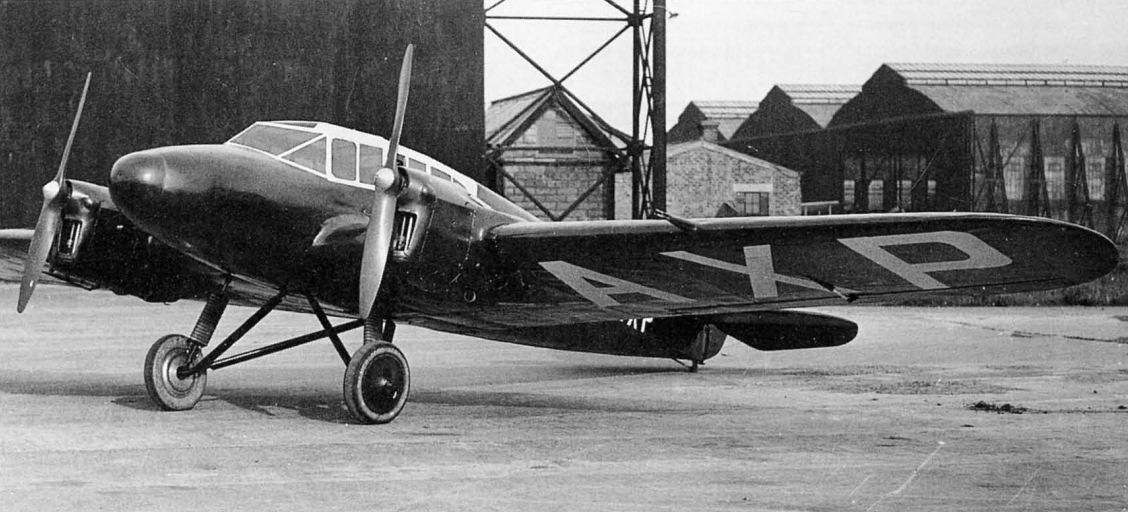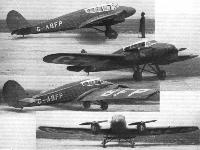
Blackburn В-1 Segrave
Blackburn В-1 Segrave был сконструирован гонщиком Генри Сегрейвом, воевавшим в Первую мировую войну в качестве летчика-истребителя, и представлял собой четырехместный двухдвигательный моноплан со свободнонесущим низкорасположенным крылом. Машина предназначалась для путешествий и туризма. Деревянный прототип под обозначением Saro Segrave Meteor I был построен компанией "Saunders-Roe" и впервые поднялся в воздух в мае 1930 года. После показа самолета в Риме представителям Министерства авиации Италии последовало подписание лицензионного соглашения на выпуск самолета под обозначением Piaggio Р.12, но построено было, вероятно, всего две машины. Учитывая, что на заводе "Cowes" компании "Saunders-Roe" не хватало места для нового проекта, и было принято решение о постройке модификации из металла, компания "Blackburn" построила только два самолета, получивших обозначения Blackburn С.А.18 Segrave I и имевших деревянное крыло компании "Saro". Ко времени завершения постройки вышеуказанных самолетов "Blackburn" приняла новый принцип нумерации, поэтому самолет Segrave стал именоваться В-1. Заказов на него не последовало, поэтому компания "Blackburn" выпустила единственный экземпляр С.А.20 Segrave II для проведения прочностных испытаний крыла.
ТАКТИКО-ТЕХНИЧЕСКИЕ ХАРАКТЕРИСТИКИ
Blackburn В-1 Segrave I
Тип: четырехместный туристический самолет
Силовая установка: два перевернутых рядных двигателя de Havilland Gipsy III мощностью 120 л.с (90 кВт)
Летные характеристики: макс, скорость на оптимальной высоте 222 км/ч; крейсерская скорость на оптимальной высоте 180 км/ч; начальная скороподъемность 244 м/мин; практический потолок 4265 м; дальность полета 724 км
Масса: пустого 1019 кг; максимальная взлетная 1497 кг
Размеры: размах крыла 12,04 м; длина 8,69 м; высота 2,36 м; площадь крыла 21,37 мг
Описание:
- Blackburn В-1 Segrave
- Flight, January 1934
NEW BLACKBURN "SEGRAVE"
Фотографии
-
Мировая Авиация 54
Регистрационный номер: G-AAXP [3] Самолет G-AAXP был прототипом Saro Segrave Meteor I. Позже В-1 совершил несколько туров по Европе, не вызвав, впрочем, серьезного интереса у потенциальных покупателей.
-
Flight 1930-10 / Flight
Регистрационный номер: G-AAXP [3] A. MODERN TYPE: The Segrave-Meteor, which will shortly be marketed both here and on the Continent on a large scale.
-
Flight 1930-07 / Flight
DESIGNED by the late Sir Henry Segrave, and built by Saunders-Roe, this machine, of all-wood construction, is a twin-engined monoplane with high performance. First appearance in public. The engines are inverted "Gipsy III," faired into the wing.
-
Flight 1930-07 / Flight
The Segrave "Meteor" (2 Gipsy III), No. 10, was flown in its standard form. Note neat engine cowling. Defective fuel feed compelled this interesting machine to return to Hanworth.
-
Aeroplane Monthly 1982-07 / R.Riding - The 1932 King's Cup air race
Регистрационный номер: G-AAXP [3] The sleek Segrave Meteor G-AAXP retired from the race on the second day.
-
Flight 1931-04 / Flight
Регистрационный номер: G-ABFP THE METAL "METEOR": G-ABFP is the first of these, and belongs to Mr. Selfridge, Jun. With other machines from Heston the "Meteor" is making a tour to Spain during the Easter Holidays.
-
Aeroplane Monthly 1994-02 / B.Elliott - Above, the law (1)
Регистрационный номер: G-ABFR [2] Blackburn Segrave G-ABFR, owned by British Air Transport Ltd at Redhill from mid-1936, was sometimes used by the Air Section.
-
Flight 1934-01 / Flight
Регистрационный номер: G-ACMI [3] -
Flight 1939-05 / Flight
Регистрационный номер: G-ACMI [3] Fitted experimentally with a Duncanson tubular-spar wing, the Blackburn Segrave was of advanced conception.
-
Flight 1934-01 / Flight
Регистрационный номер: G-ACMI [3] -
Flight 1933-09 / Flight
Регистрационный номер: G-ABFR [2] THE HULL-GRIMSBY AIR FERRY: A snap of the Blackburn "Segrave" monoplane, operated by East Yorkshire Motor Services, Ltd., and North Sea, Aerial & General Transport, Ltd., on the Hull-Grimsby air ferry, flying over Hull Docks.
-
Flight 1930-05 / Flight
A "NEW NOTE" IN BRITISH AIRCRAFT DESIGN: The "Meteor," just completed at the Cowes works of Saunders-Roe, owes its inception to Sir Henry Segrave. It is a four-seater monoplane fitted with two "Gipsy III" engines. The first machine is of all-wood construction, but subsequent ones will have metal fuselages. Clean aerodynamic design has been one of the objects, as well as a high performance.
- Фотографии












